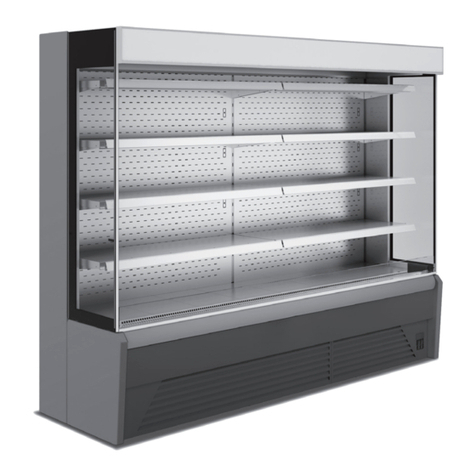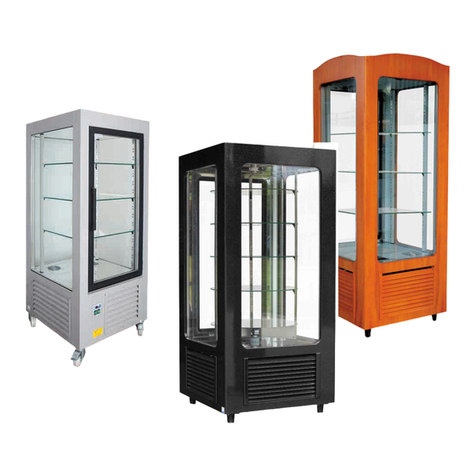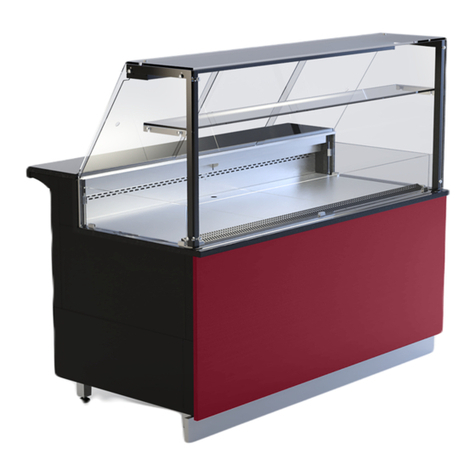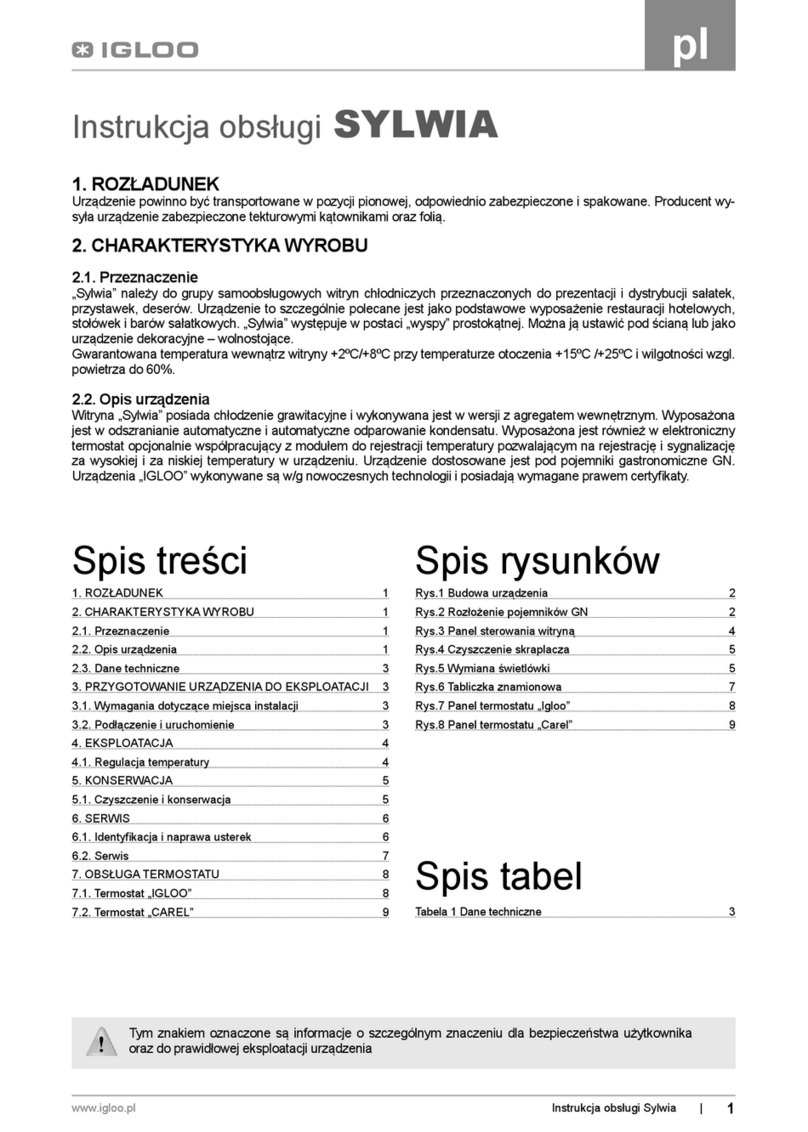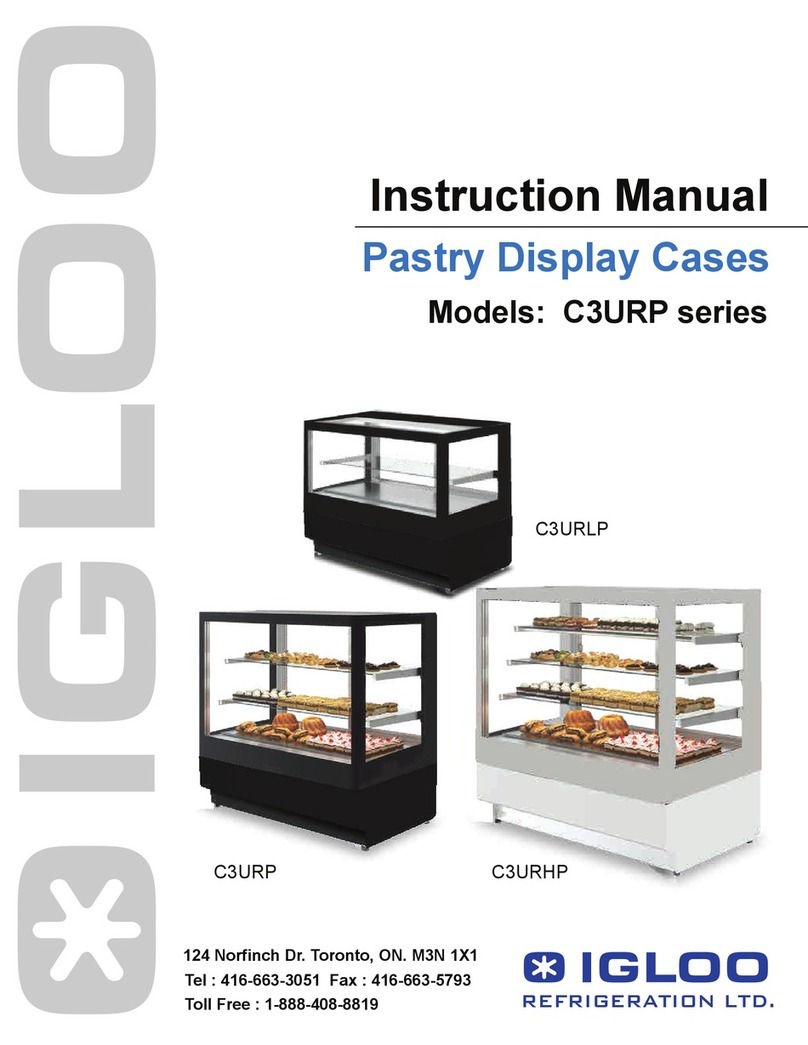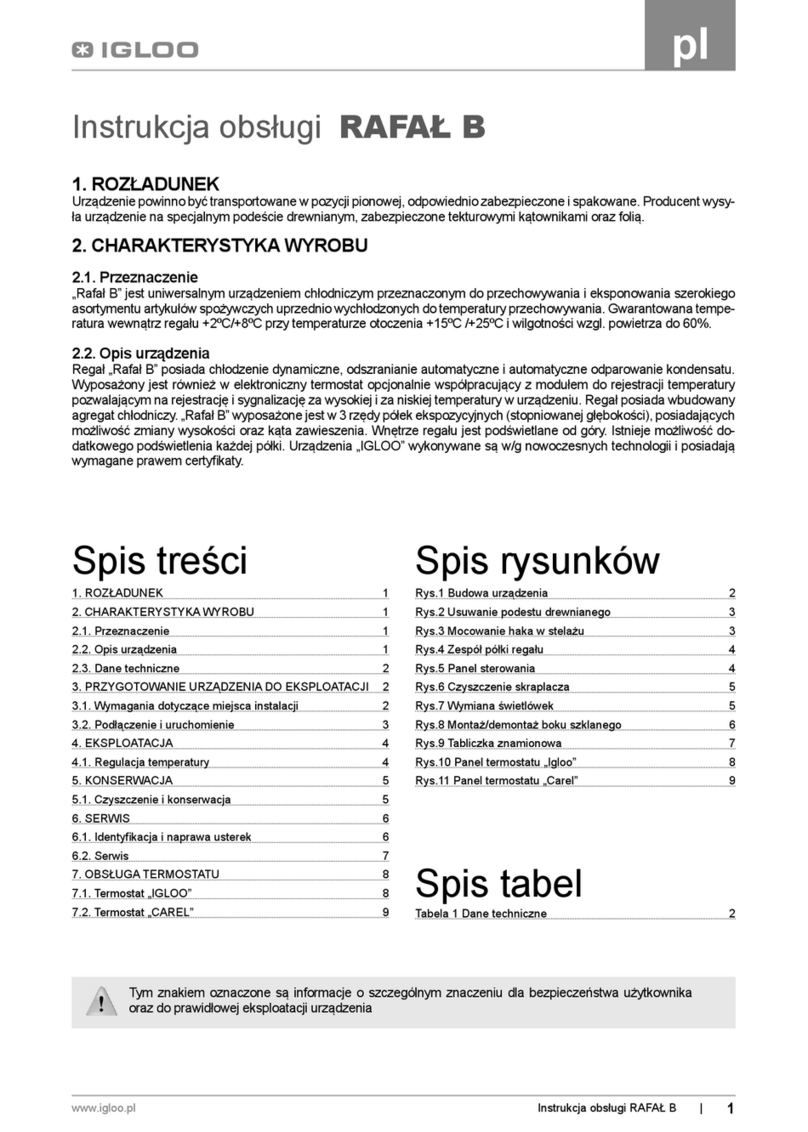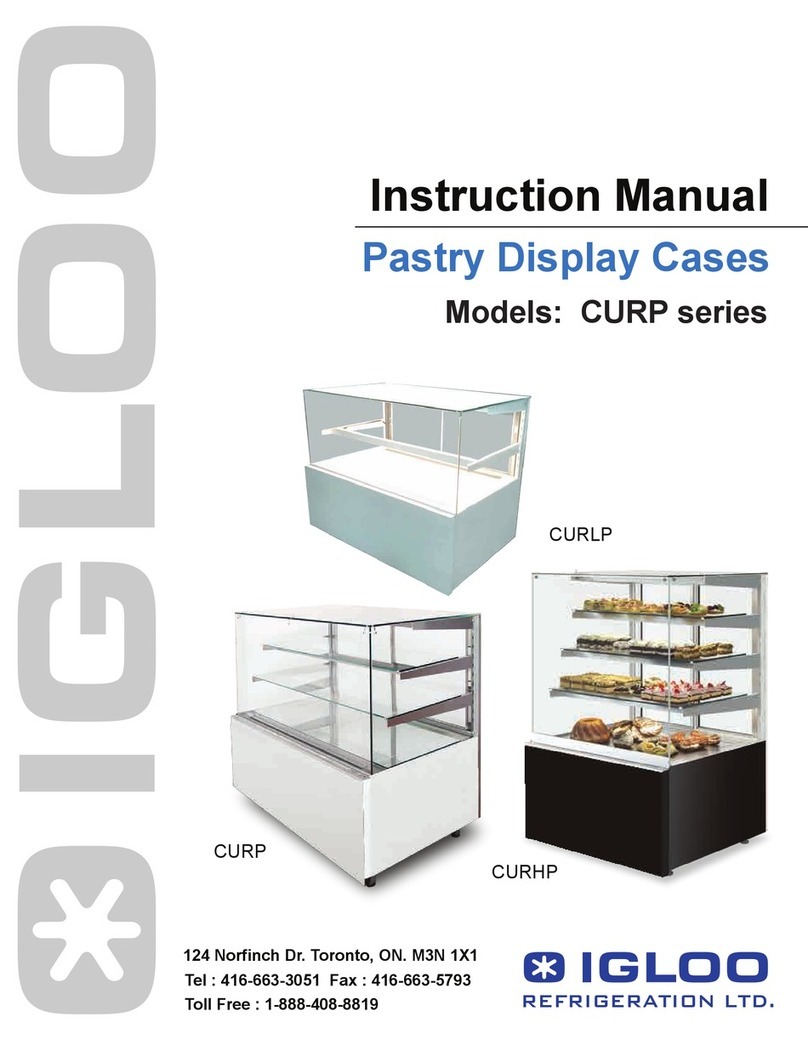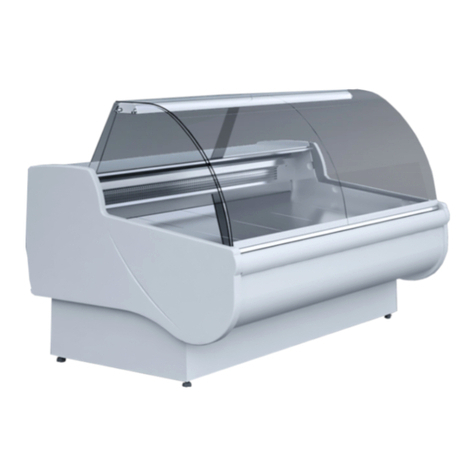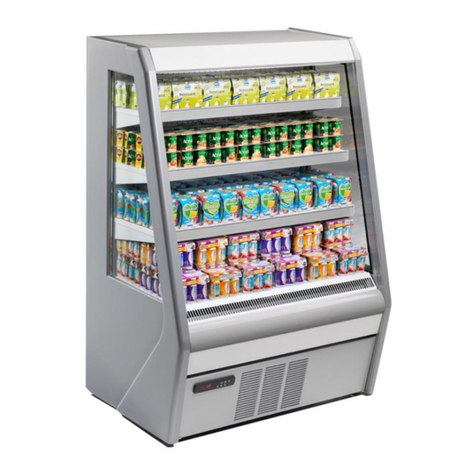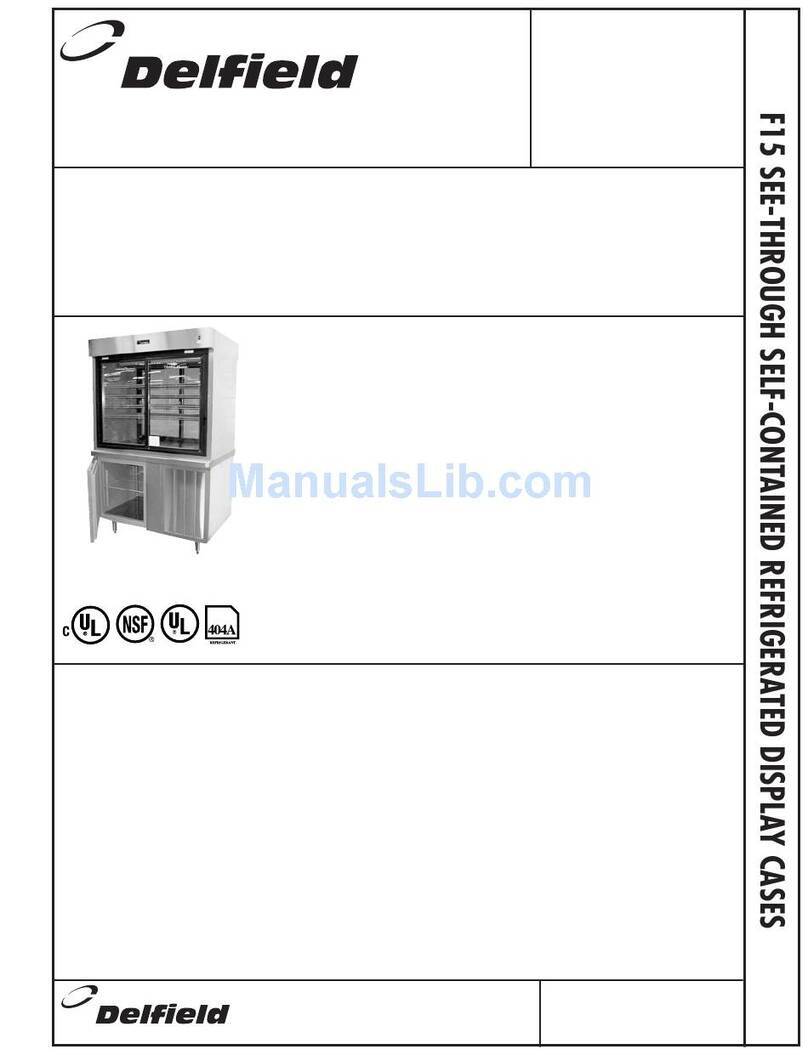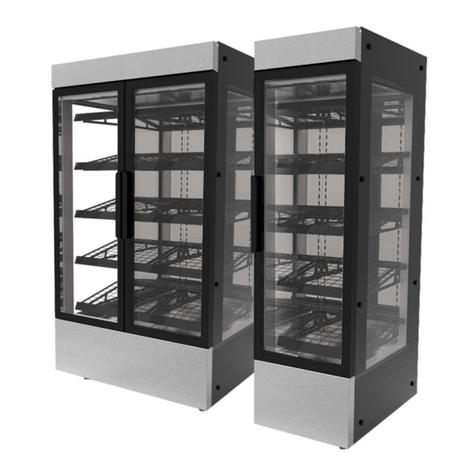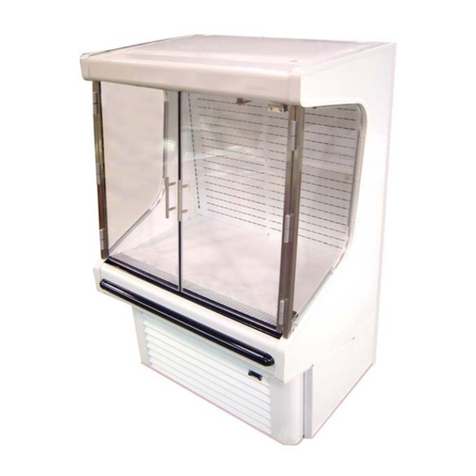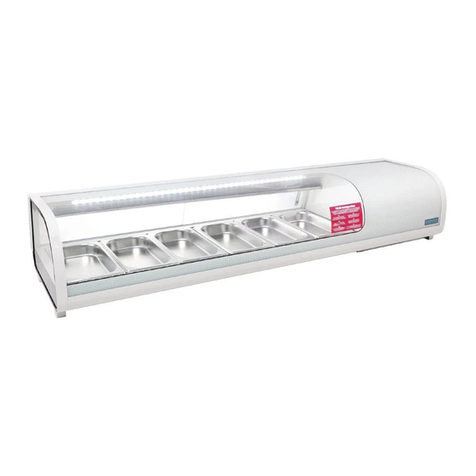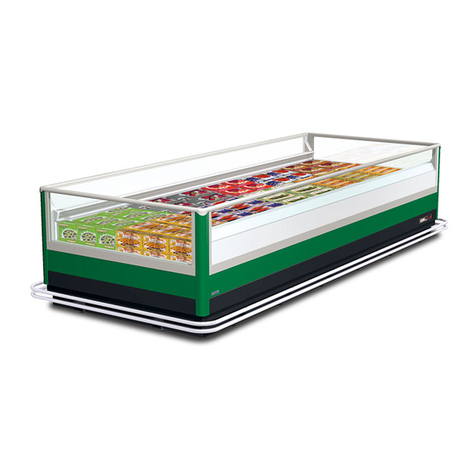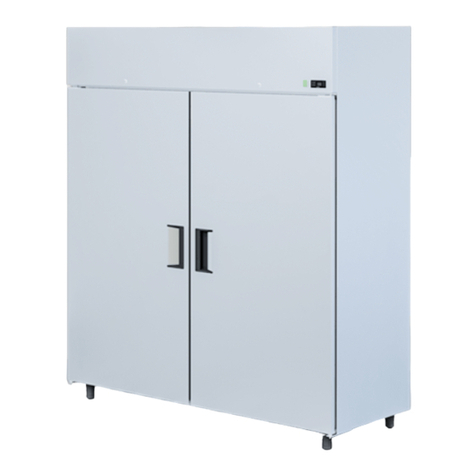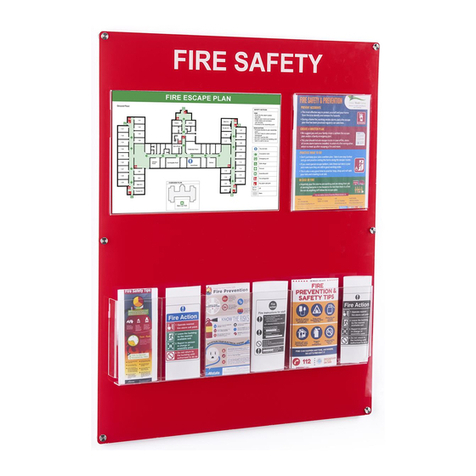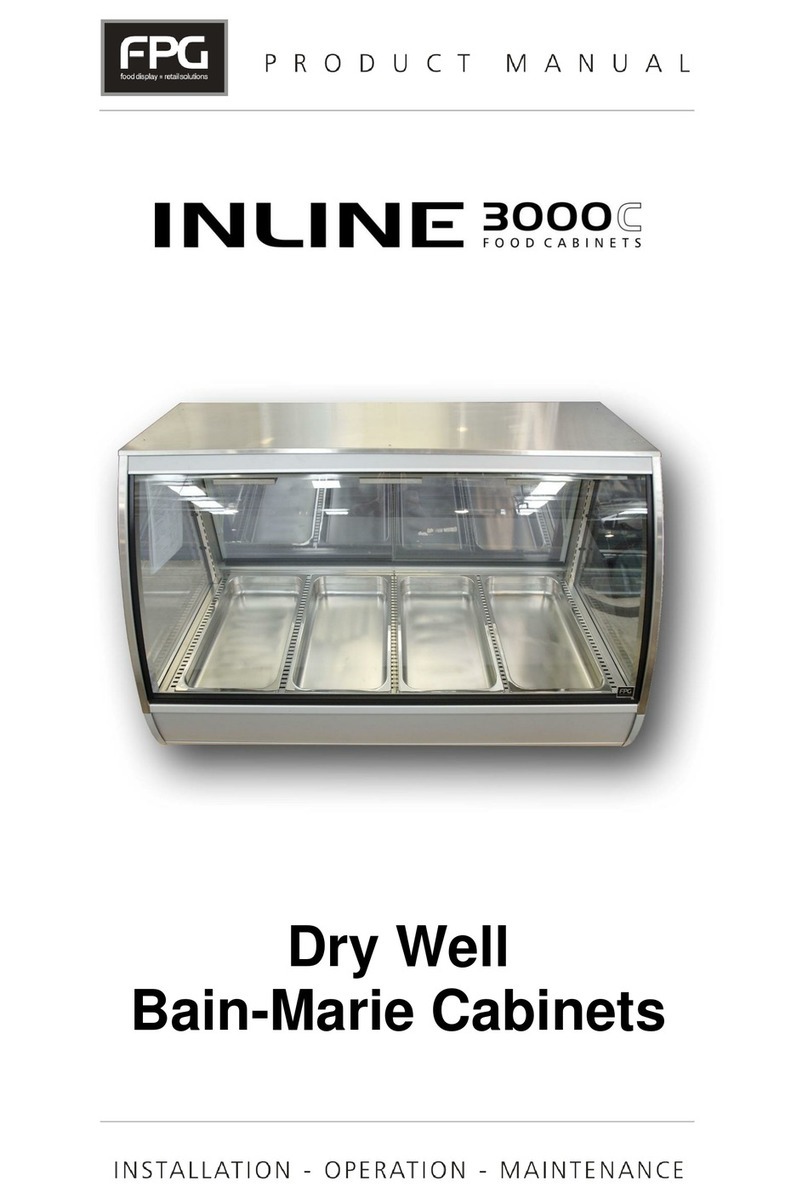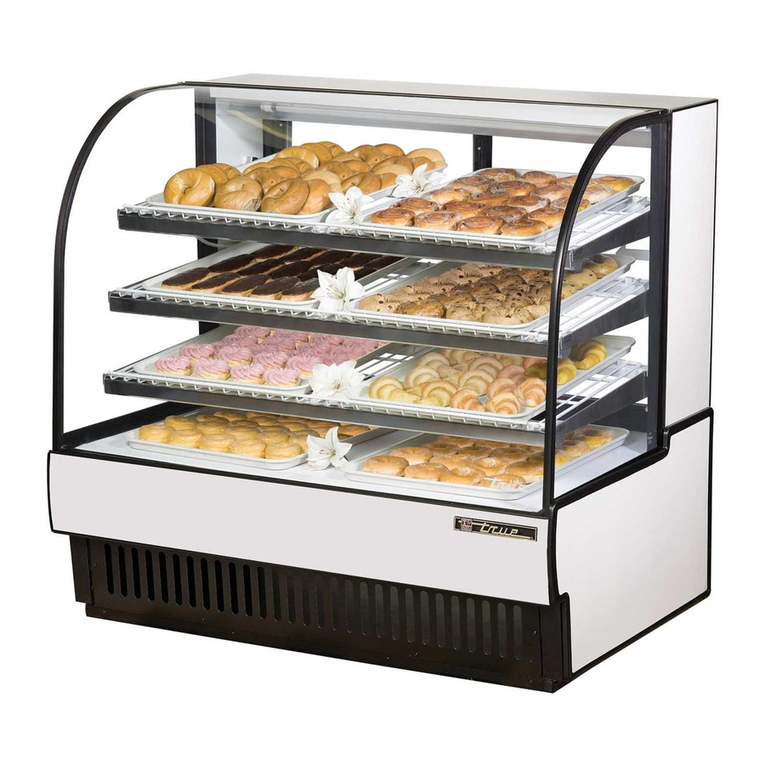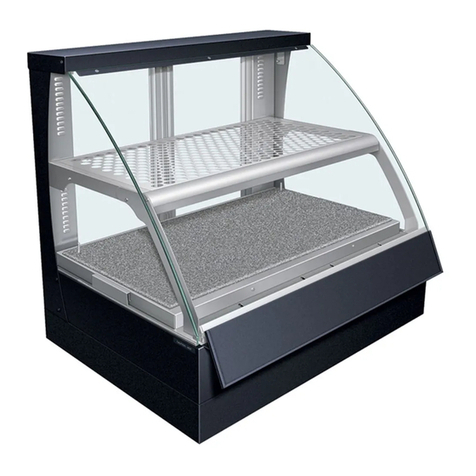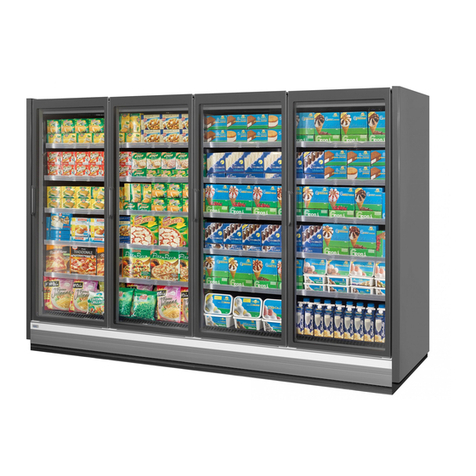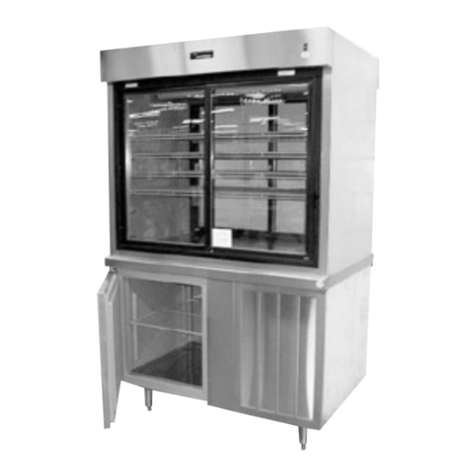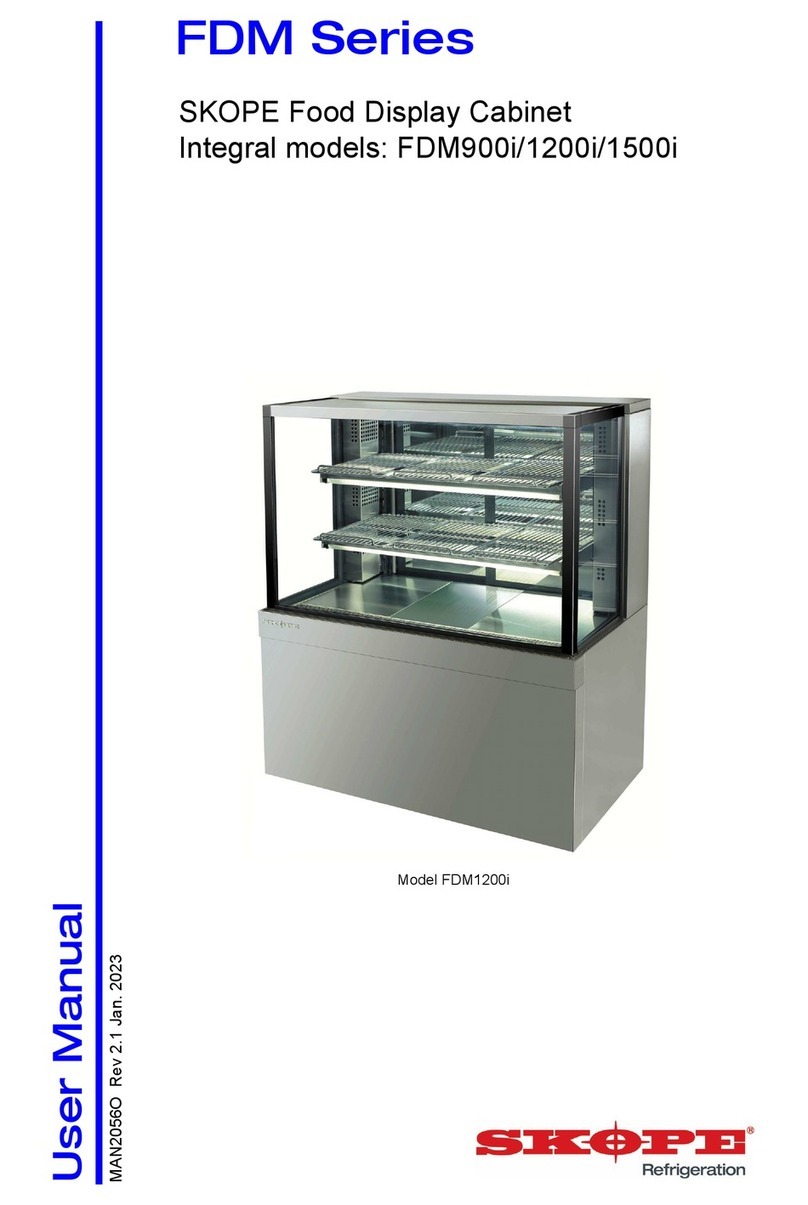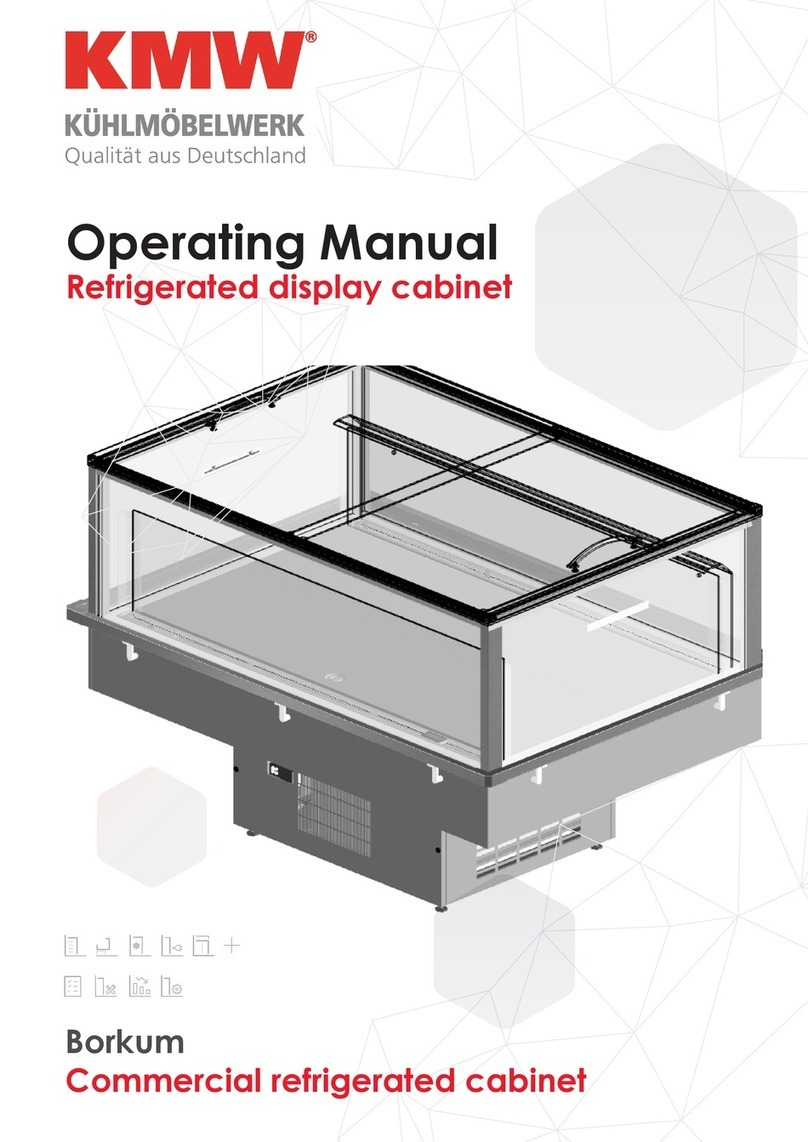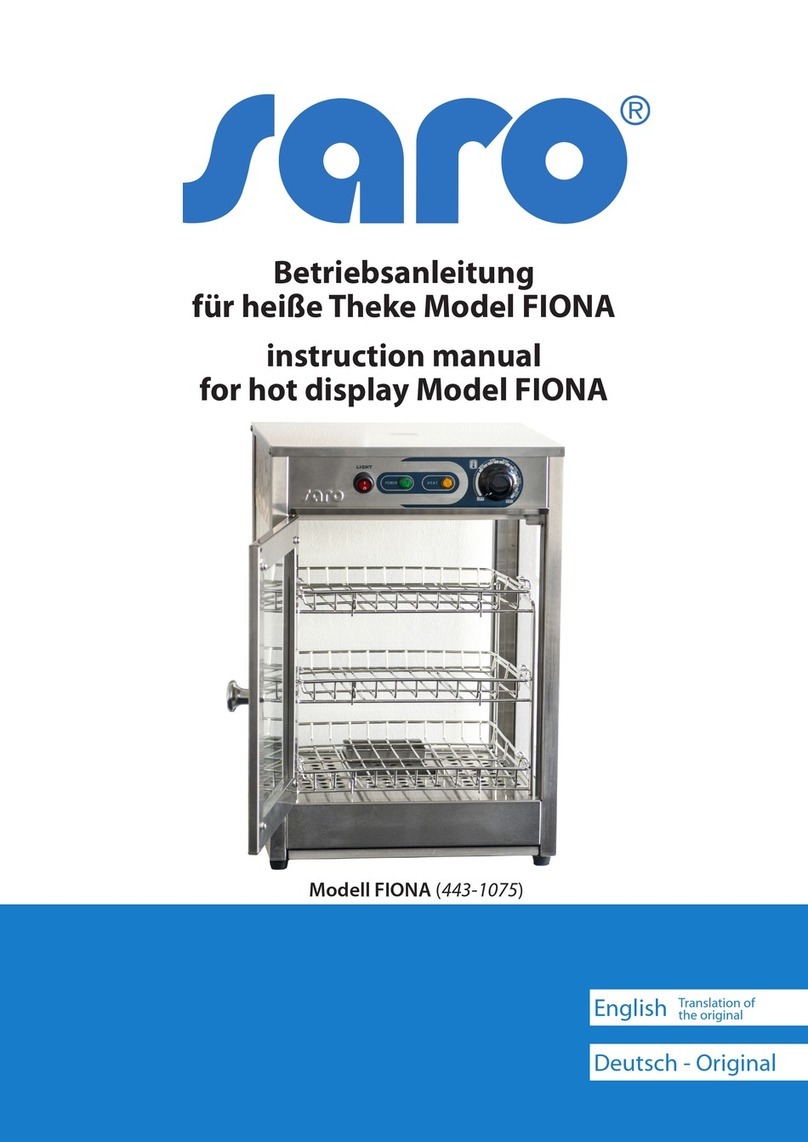6. SERWIS
6.1. Identykacja i naprawa usterek
W przypadku wystąpienia jakichkolwiek trudności podczas uruchamiania urządzenia lub podczas jego eksploatacji należy
powrócić do tych rozdziałów instrukcji obsługi, które wyjaśniają wykonywaną operacje. Ma to na celu upewnienie się, czy
urządzenie jest prawidłowo obsługiwane. Jeżeli trudności występują nadal, poniższe wskazówki pomogą w ich usunięciu.
Urządzenie nie pracuje...- Upewnić się, czy:
• Urządzenie jest podłączone do sieci prądu elektrycznego
• Napięcie i częstotliwość w sieci są odpowiednie z tymi, jakie zaleca producent (patrz tabliczka znamionowa)
• Włączony jest wyłącznik główny
• Termostat jest załączony (Dotyczy term. Igloo – Jeśli na wyświetlaczu wyświetlają się jedynie dwie kropki – włącz
termostat)
Urządzenie pracuje, oświetlenie nie świeci...- Upewnić się, czy:
• Wyłącznik oświetlenia jest w pozycji załączonej
• Świetlówka lub zapłonnik w urządzeniu nie uległy spaleniu
• (Dotyczy oświetlenia LED) Sprawdzić, czy wtyczki zasilające świetlówkę LED są prawidłowo dociśnięte
Urządzenie nie osiąga odpowiedniej temperatury, oświetlenie świeci...- Upewnić się, czy:
• Wyłącznik główny jest w pozycji załączonej
• Nastawa temperatury na termostacie jest odpowiednio ustawiona
• Termostat działa poprawnie
• Skraplacz nie jest zanieczyszczony, w razie potrzeby wyczyścić
• Temperatura otoczenia nie jest wyższa niż 25ºC
• Minęło wystarczająco dużo czasu dla schłodzenia produktów
• Otwory wentylacyjne urządzenia nie są zablokowane
(Dotyczy term. „IGLOO”) Termostat wyświetla C0 lub C1 lub C2 zamiast temperatury: Sytuacja taka ma miej-
sce, jeżeli został uszkodzony jeden z czujników regulatora temperatury wówczas mogą pojawić się następujące
komunikaty:
• C0 – uszkodzenie czujnika temperatury wewnątrz komory – wezwać autoryzowany serwis
• C1 – uszkodzenie czujnika parownika - wezwać autoryzowany serwis
• C2 – uszkodzenie czujnika alarmu skraplacza (lub uszkodzenie drugiego czujnika parownika) – wezwać autoryzo-
wany serwis
(Dotyczy term. „CAREL”) Termostat wyświetla E0 lub E1 lub L0 lub HI lub EE lub Ed lub DF zamiast tempe-
ratury:
• E0 -uszkodzenie czujnika temperatury wewnątrz komory- wezwać autoryzowany serwis
• E1 -uszkodzenie czujnika parownika - wezwać autoryzowany serwis
• L0 –alarm niskiej temperatury (niższej niż zadany zakres wewnątrz urządzenia) - wezwać autoryzowany serwis
• HI - alarm wysokiej temperatury - wezwać autoryzowany serwis
• EE -błąd wewnętrzny regulatora - wezwać autoryzowany serwis
• Ed – przekroczenie max. czasu odszraniania
• DF – odszranianie w toku (to nie jest sygnał alarmowy)
(Dotyczy term. „IGLOO”) Urządzenie pracuje, włączona sygnalizacja dźwiękowa...- Upewnić się, czy
• Skraplacz nie jest zanieczyszczony, w razie potrzeby wyczyścić
• Pracuje wentylator skraplacza
• Temperatura otoczenia nie przekracza 25ºC
Urządzenie pracuje zbyt głośno...- Upewnić się, czy
• Urządzenie stoi stabilnie
• Przylegające do urządzenia meble nie drgają podczas pracy sprężarki agregatu chłodniczego
Elementy urządzenia mogą korodować przy niewłaściwym użytkowaniu i konserwacji.
Należy przestrzegać zasad:
• Nie dopuszczać do kontaktu powierzchni urządzenia z środkami zawierającymi chlor i/lub sodę
w różnych odmianach, które niszczą ich warstwę ochronną i elementy składowe urządzenia (dotyczy
również różnych gatunków stali nierdzewnej)
Podczas czynności konserwujących należy uważać, aby nie uszkodzić tabliczki znamionowej urządze-
nia Rys.10 (str.8), która zawiera istotne informacje dla serwisantów oraz rm zajmujących się usuwaniem
odpadów.
